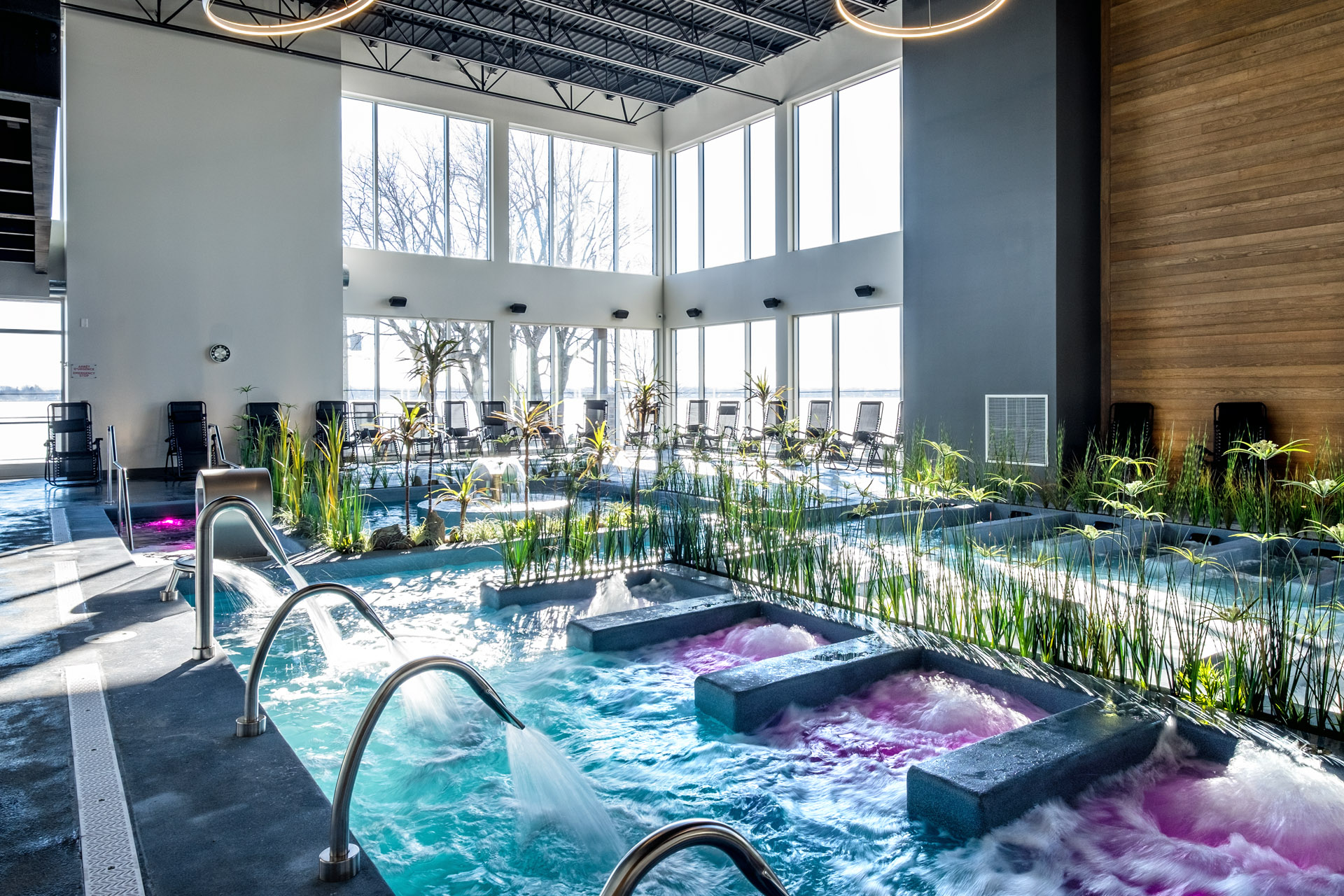How to Design Commercial Spas, Nordic Baths, and Hot Tubs: A Focus on Mechanical Design
Beneath the allure of commercial spas, Nordic baths, and hot tubs lies the critical skill of mechanical design, essential for functionality and safety. Designing a commercial spa is not as simple as filling a space with mist and hot water. Working with a renowned spa design consultant provides the project with careful planning and attention to detail.
To create a stunning and functional commercial spa environment, mechanical design must extend to every aspect of the project. This article explores how to design a spa with key mechanical design considerations, from piping and room dimensions to equipment selection and testing, ensuring a seamless wellness experience.

Spa Design Piping and Plumbing
Efficient plumbing and piping systems are the backbone of any commercial spa design. Properly designed piping ensures the reliable flow of water, the regulation of temperature, and the appropriate distribution of chemicals for sanitation. Here are some key points to consider:
- Pipe Material: Choose high-quality materials, such as PVC and/or CPVC, for the piping to withstand the corrosive effects of hot water and chemicals.
- Layout: Plan a logical and accessible pipe layout that minimizes bends and restrictions, reducing pressure drop and making maintenance easier. Take into consideration the winterization of installations. If an installation is without power for several days, the system must be designed to avoid irreparable problems.
- Size and Flow Rates: Determine the appropriate pipe size and flow rates based on the capacity and desired turnover rate of the facility.
- Backflow Prevention: Install backflow prevention devices to protect the water supply from contamination.
Mechanical Room
The mechanical room is the heart of a commercial spa’s operation, housing equipment for water heating, circulation, filtration, and chemical treatment. Designing this space efficiently is critical to ensure smooth operations and easy maintenance:
- Space Considerations: A qualified spa design consultant will allocate sufficient space for all equipment, allowing for easy access, maintenance, and future upgrades. They understand the need to stay proactive instead of reactive. To achieve this, at the design stage, a 3D model is developed to visualize the space and modify the configuration according to the project requirements.
- Ventilation: Provide proper ventilation and air exchange to dissipate moisture and maintain a comfortable environment for staff working in the mechanical room. Ventilation is essential to prevent excessive heating of the room created by continuously running equipment. Ventilationis also essential to properly control the areas where the chemicals used to balance the water in the installations are stored.
- Safety Measures: Install safety features, such as emergency shut-off switches and alarms, to respond quickly to any issues which can occur in bathing areas and mechanical rooms.

Spa Design Pool Size and Other Considerations
The dimensions of the pools, spas, hot tubs, and Nordic baths play a significant role in providing the desired customer experience. Ensure that pool size and shape are designed to accommodate the expected number of users comfortably while adhering to local regulations.
Depth, Accessibility, and Equipment Selection
Determine the appropriate depth for different areas of the pool, including shallow sections for relaxation and deeper areas for swimming or immersion. Consider accessibility requirements for individuals with disabilities, ensuring that the facility is inclusive. Selecting the right equipment is crucial for maintaining water quality, energy efficiency, and customer satisfaction.
Filtration and Circulation
Choose high-efficiency pumps and filtration systems to ensure water clarity and cleanliness. Go for energy-efficient heaters to control water temperature and consider renewable energy sources to reduce operational costs. Select automated chemical treatment systems to maintain proper water chemistry and reduce the need for manual adjustments.
Spa Design Lighting and Controls
Install energy-efficient LED lighting and advanced control systems to enhance the customer experience and reduce operational costs. Doing this not only increases efficiency and decreases long-term expenses but also creates an exciting atmosphere for patrons. Think about integrating the various light junction boxes to facilitate maintenance and replacement of the lighting.
Finishes and Materials
While the focus of this article is on mechanical design, the selection of finishes and materials is essential to the overall functionality and aesthetics of the facility:
- Slip-Resistant Surfaces: Use non-slip flooring and deck materials to enhance safety in wet environments and reduce liability.
- Waterproofing: Ensure proper waterproofing of walls and floors to prevent water damage and mold growth.
- Easy Maintenance: Select materials that are easy to clean and maintain, reducing long-term operational costs.
- Heating elements: Integrate heated ramps for entering the pools which can be beneficial for snow clearance and improve the user experience.
- Jets: Select jets located outside the bath that project a powerful jet onto the user’s upper back.
Don’t Allow Aesthetics to Overshadow Basic Fundamentals
Designing commercial spas, Nordic baths, and hot tubs requires careful attention to aquatic design construction. The overall goal when designing a spa is ensuring the facility operates efficiently and safely. While aesthetics are important, they should not overshadow the fundamental aspects of plumbing, equipment selection, mechanical room design, pool dimensions, and proper finish choices. By prioritizing these mechanical elements, you can learn how to design a spa that not only looks beautiful but also functions seamlessly, providing customers with a truly relaxing and enjoyable experience.


Need support to design your spa?
Our aquatic experts and engineers are ready to collaborate with you on your project.

